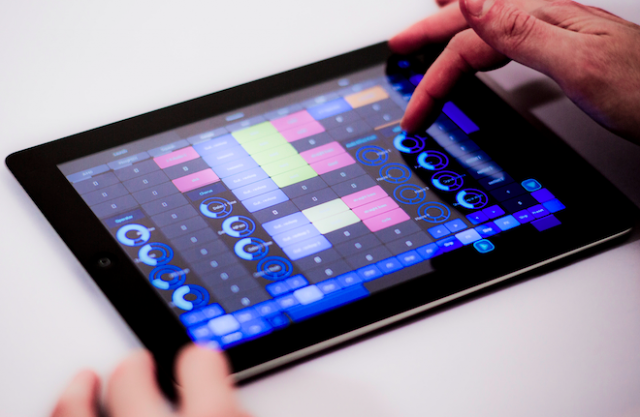Liine has released LiveControl 2, a new version of its ‘next generation’ Ableton Live controller.
Here’s what they have to say about LiveControl 2:
LiveControl 2 gives you every single feature you need to jam, produce and perform with Ableton Live.
The interface is divided across four pages: Launch, Modulate, Play and Sequencer. Each page is deep and feature-rich, while the layout is clear and intuitive. Compatible with both Live 8 and Live 9.
Here’s a demo of LiveControl 2 in action:
LiveControl 2 is a free download for Lemur for iPad. Lemur for iPad is required, and is available in the App Store.


I just bought the Lemur app for this one and it’s pretty neat ! I’m still gonna get the Push though. Live Control 2 does pretty much the same on an iPad, with all the good things and the bad things too.
What are the bad things?
It’s different to push and lacking a few features
Can’t load instruments or presets
Can’t record a new clip from play mode
Cant record a new clip from sequence mode
Things it can do that push can’t
Modulation, both physics and LFO
“favourite clips” which is a pretty neat twist on copy/paste!
I still need to spend a few more hours with the thing, but if there’e one word for this template.. Solid.
Holy Bitch. This looks mighty impressive.
I tried it out, and while it’ll never take the place of my APC, the layout IS very impressive. Especially how the interface handles stuff like text, folded tracks, level metering and viewing multiple effects on a single (or any) channel at once. I did find there to be a bit of a lag which I could envision causing a bit of panic if you’re someone who tends to really scramble all over their setup while working or playing a live show. But that could also just be an iPad 2 issue. Either way, it’s nice that such thorough control over so much of Ableton’s features can be had with a single iPad app. Definitely a nice bonus to owning Lemur, which is still the best 50 bucks I’ve ever spent on an app.
I like Lemur and it works for me as a virtual controller, but I can’t seem to get an ad hoc network going between a Mac desktop and an iPad. Has anyone had trouble getting the signal bars to show up on the iPad after joining the ad hoc network? If so and you’ve managed to overcome it, I’d like to know how.
I haven’t been able to connect with an ad-hoc network since the update to IOS 6. I couldn’t use Lemur wirelessly for quite a while until I tried running it on the same wifi-network that you use for internet… If that makes any sense. I don’t remember the steps I took to do this, but all I know is that once it’s working, you barely have to select anything to connect after. Just start up the Lemur Daemon, your daw & the app and everything connects on it’s own. Saved my whole damn operation.
You don’t necessarily NEED an ad hoc connection. Works fine for me with a plain one (though my router is only a few feet away)
I haven’t done ad hoc networks recently but I really advise against it and just do a wired network connection. I had perceivable latency in a wireless connection that wouldn’t be acceptable for a live performance. Not only that, wireless network stability is subject to the environment and if you are designing a mobile (live) setup, there is no guarantee that the wireless network will behave exactly the same from one venue to another.
I also had that problem, but as my iPad is a 3G model, I just make an USB tether. Solves the ad-hoc problem and is more reliable and faster.
If your iPad is not a 3G model, but is jailbroken you can use Mywi to make a network connection through USB.
Mr.smith. Google is your friend. Use it! You should not have a problem.
I was hoping they would base this on TouchOSC… but of course ir makes sense for them to develop this for Lemur.
The main showstopper of the whole ipad-controller thing is still connectivity. At least with the old TouchOSC-based livecontrol it’s really annoying to have to go through the pain of setting up an ad hoc network everytime you don’t want the terrible lag. Plus it’s really far fron the ease of use of hardware controllers, where you just boot your laptop and you’re ready to go.
After 2 days using it : not that impressed. Mixer integration is bad, and clip navigation slow.